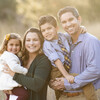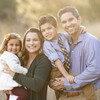“Though your sins are like scarlet, they shall be as white as snow.” — Is. 1:18
Let’s be real. There are some strange stories in the Bible. These stories aren’t there for us to repeat. They are there for us to examine, think critically about and learn from.
One example is a story about a prostitute named Tamar. We learn of Tamar’s series of unfortunate events in Genesis 38. She married a man named Er who was so wicked “the Lord put him to death.”[1] Then the patriarch of the family (Judah) asked a second son, Onan, to provide offspring for her so the family line could continue. Onan didn’t want to take on this responsibility. He was willing to use her for his pleasure but didn’t want the responsibility of children so he “spilled his seed on the ground.”[2]
Tamar lived in a time before the #MeToo movement was a popular hashtag, yet she knew all about what it meant to be violated and used by men. Single and left with no other options, Tamar came up with a plan to disguise herself as a prostitute. If Judah the patriarch of the family would not protect her in an honorable way, she figured she could take care of things herself. She knew what kind of guy Judah was — the kind of guy who would visit a prostitute on the side. But before the act took place, she made sure to get his staff and seal as payment. If she became pregnant, she would have proof of who impregnated her.
After three months it became clear that she was pregnant. Judah used this as an excuse to get rid of her. She was accused of prostitution, and Judah declared she should be burned to death. But Tamar sent his staff and seal back with a message: The owner of these items was the man who had made her pregnant.
Tamar gave birth to twins, Perez and Zerah. The midwife marked Zerah's hand with a scarlet cord when his hand emerged first from the womb. The scarlet cord was intended to identify the firstborn son. There was privilege that came with being born at the right time and the right gender. But instead of symbolizing status and privilege, the scarlet cord ends up symbolizing the unexpected. Zerah’s brother Perez emerges first from the womb.
Fast forward to another story about a prostitute. Rahab was not an Israelite, but she had come to have faith in the God of Israel. As a result of her faith, she was not destroyed with the city when Jericho fell. Rahab and all her family were marked for protection by a scarlet cord that hung from her wall. After Jericho’s destruction, Rahab remained in the land of Israel, married a nobleman and gave birth to a son. That son was Boaz.
Boaz grew up in a culture that makes the misguided sexuality of our day seem tame. No chapter in the Bible better captures this total depravity of life in Boaz’s hometown than Judges 19. This is not a chapter we read to our kids at bedtime. It’s a story about how a Levite threw his concubine to a mob of men. After being violated all night long she died, and then the Levite cut up her body, and sent body parts to the twelve tribes of Israel.
Why is a story like this in the Bible? It may be to show that out of this total depravity comes a redeemer named Boaz. He was the son of a Canaanite prostitute, yet he grows up loving God. Although his mother was not an Israelite by birth, she became part of God’s chosen people. Although she once lived as a prostitute, her legacy is as a woman of faith.[3]
Rahab would have explained to Boaz the story of redemption, the story of hope, the story about how God used her scarlet cord to rescue her — how although she was a foreigner, she was accepted by God.
When Boaz saw a Moabite named Ruth, he saw a woman who reflected the image of God. He treated her with respect because that is the way he was raised to treat women. Deuteronomy 23 sa Moabites were not allowed to enter the assembly of God. But Ruth enters a covenant, demonstrating that anyone can freely worship God.
Tamar, Rahab and Ruth are connected through stories of suffering. But they are also connected through the lineage of redemption. Ruth 4:18–22 points out Tamar’s son Perez was the grandfather seven generations removed from Boaz. This genealogy produced King David. This genealogy ultimately culminated in the birth of Christ.
A scarlet cord was placed around Tamar’s baby. A scarlet cord was hung outside Jericho’s wall. And a scarlet robe was placed upon Jesus to mock him before his death on the cross. But the scarlet cord is not the mark of shame; it’s the sign of redemption. Although our sins are as scarlet, they shall be as white as snow.
God’s chosen people are not chosen because of their religious affiliation, ethnicity, or because they are perfect. They are chosen because they are willing to be redeemed by love. The ugly portraits the Bible reveals are made beautiful by the redemption that weaves its way through the whole book. The Biblical arc may be long, but it bends towards justice. In the end love wins.
[1] Gen. 38:7
[2] Gen. 38:9
[3] Heb. 11:31










